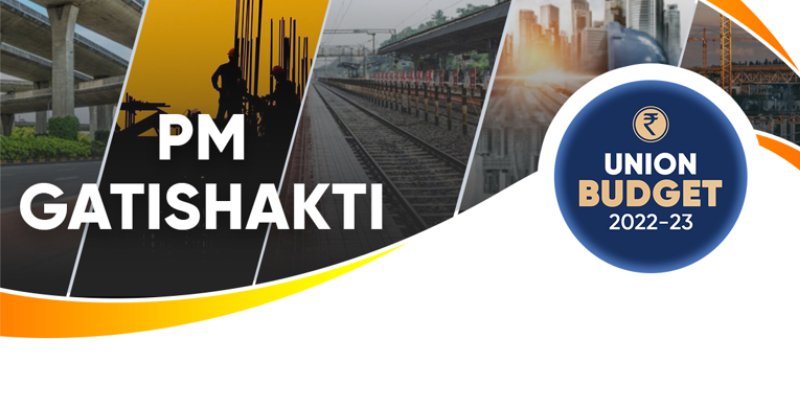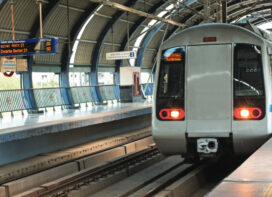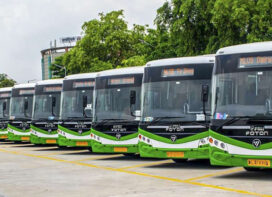
Union Budget 2022 – 23 has now been hailed as a progressive, forward looking one. It sets the stage for sustainable growth. Apart from new taxes and subsidies, and focus on capex & MSMEs, the budget gives a boost to Centre’s Gati Shakti programme. The Multimodal plan is envisaged to help improve India’s logistics sector as well.
Here are the important features pertaining to infrastructure development included in the budget.
- This Budget continues to provide impetus for growth. It lays a Parallel track of (1) a blueprint for the Amrit Kaal, which is futuristic and inclusive. This will directly benefit our youth, women, farmers, the Scheduled Castes and the Scheduled Tribes. And (2) big public investment for modern infrastructure, readying for India at 100. This shall be guided by PM GatiShakti and be benefited by the synergy of multi-modal approach.
Four priorities:
- PM GatiShakti
- Inclusive Development
- Productivity Enhancement & Investment, Sunrise Opportunities, Energy Transition, and Climate Action
- Financing of Investments
- PM GatiShakti is a transformative approach for economic growth and sustainable development. The approach is driven by seven engines, Namely, Roads, Railways, Airports, Ports, Mass Transport, Waterways, and Logistics Infrastructure. All seven engines will pull forward the economy in unison. These engines are supported by the complementary roles of Energy Transmission, IT Communication, Bulk Water & Sewerage, and Social Infrastructure. Finally, the approach is powered by Clean Energy and Sabka Prayas – the efforts of the Central Government, the state governments, and the private sector together – leading to huge job and entrepreneurial opportunities for all, especially the youth.
- The scope of PM GatiShakti National Master Plan will encompass the seven engines for economic transformation, seamless multimodal connectivity and logistics efficiency. It will also include the infrastructure developed by the state governments as per the GatiShakti Master Plan. The focus will be on planning, financing including through innovative ways, use of technology, and speedier implementation.
- The projects pertaining to these 7 engines in the National Infrastructure Pipeline will be aligned with PM GatiShakti framework. The touchstone of the Master Plan will be world-class modern infrastructure and logistics synergy among different modes of movement – both of people and goods – and location of projects. This will help raise productivity, and accelerate economic growth and development.
- PM GatiShakti Master Plan for Expressways will be formulated in 2022-23 to facilitate faster movement of people and goods. The National Highways network will be expanded by 25,000 km in 2022-23. 20,000 crore will be mobilized through innovative ways of financing to complement the public resources.
- The data exchange among all mode operators will be brought on Unified Logistics Interface Platform (ULIP), designed for Application Programming Interface (API). This will provide for efficient movement of goods through different modes, reducing logistics cost and time, assisting just-in-time inventory management, and in eliminating tedious documentation. Most importantly, this will provide real time information to all stakeholders, and improve international competitiveness. Open-source mobility stack, for organizing seamless travel of passengers will also be facilitated.
- Contracts for implementation of Multimodal Logistics Parks at four locations through PPP mode will be awarded in 2022-23.
- Railways will develop new products and efficient logistics services for small farmers and Small and Medium Enterprises, besides taking the lead in integration of Postal and Railways networks to provide seamless solutions for movement of parcels.
- ‘One Station-One Product’ concept will be popularized to help local Businesses & supply chains.
- As a part of Atmanirbhar Bharat, 2,000 km of network will be brought under Kavach, the indigenous world-class technology for safety and capacity augmentation in 2022-23. Four hundred new-generation Vande Bharat Trains with better energy efficiency and passenger riding experience will be developed and manufactured during the next three years.
- One hundred PM GatiShakti Cargo Terminals for multimodal logistics facilities will be developed during the next three years. Mass Urban Transport including Connectivity to Railways
- Innovative ways of financing and faster implementation will be encouraged for building metro systems of appropriate type at scale. Multimodal connectivity between mass urban transport and railway stations will be facilitated on priority. Design of metro systems, including civil structures, will be re-oriented and standardized for Indian conditions and needs.
- As a preferred ecologically sustainable alternative to conventional roads in difficult hilly areas, National Ropeways Development Programme will be taken up on PPP mode. The aim is to improve connectivity and convenience for commuters, besides promoting tourism. This may also cover congested urban areas, where conventional mass transit system is not feasible. Contracts for 8 ropeway projects for a length of 60 km will be awarded in 2022-23.
- With technical support from the Capacity Building Commission, central ministries, state governments, and their infra-agencies will have their skills upgraded. This will ramp up capacity in planning, design, financing (including innovative ways), and implementation management of the PM GatiShakti infrastructure projects.
- A new scheme, Prime Minister’s Development Initiative for NorthEast, PM-DevINE, will be implemented through the North-Eastern Council. It will fund infrastructure, in the spirit of PM GatiShakti, and social development projects based on felt needs of the North-East. This will enable livelihood activities for youth and women, filling the gaps in various sectors. It will not be a substitute for existing central or state schemes. While the central ministries may also pose their candidate projects, priority will be given to those posted by the states. An initial allocation of 1,500 crore will be made, and the initial list of projects is given in Annexure-1.
- Border villages with sparse population, limited connectivity and infrastructure often get left out from the development gains. Such villages on the northern border will be covered under the new Vibrant Villages Programme. The activities will include construction of village infrastructure, housing, tourist centers, road connectivity, provisioning of decentralized renewable energy, direct to home access for Doordarshan and educational channels, and support for livelihood generation. Additional funding for these activities will be provided. Existing schemes will be converged. We will define their outcomes and monitor them on a constant basis.
- The Circular Economy transition is expected to help in productivity enhancement as well as creating large opportunities for new businesses and jobs. The action plans for ten sectors such as electronic waste, end-of-life vehicles, used oil waste, and toxic & hazardous industrial waste are ready. The focus now will be on addressing important cross cutting issues of infrastructure, reverse logistics, technology up gradation and integration with informal sector. This will be supported by active public policies covering regulations, extended producers’ responsibilities framework and innovation facilitation.
- As a part of the government’s overall market borrowings in 2022-23, sovereign Green Bonds will be issued for mobilizing resources for green infrastructure. The proceeds will be deployed in public sector projects which help in reducing the carbon intensity of the economy.
- Data Centers and Energy Storage Systems including dense charging infrastructure and grid-scale battery systems will be included in the harmonized list of infrastructure. This will facilitate credit availability for digital infrastructure and clean energy storage.
- For financing the infrastructure needs, the stepping-up of public investment will need to be complemented by private capital at a significant scale. Measures will be taken to enhance financial viability of projects including PPP, with technical and knowledge assistance from multi-lateral agencies. Enhancing financial viability shall also be obtained by adopting global best practices, innovative ways of financing, and balanced risk allocation.
- We will promote a shift to use of public transport in urban areas. This will be Complemented by clean tech and governance solutions, special mobility zones with zero fossil-fuel policy, and EV vehicles. Battery Swapping Policy
- Considering the constraint of space in urban areas for setting up charging stations at scale, a battery swapping policy will be brought out and inter-operability standards will be formulated. The private sector will be encouraged to develop sustainable and innovative business models for ‘Battery or Energy as a Service’. This will improve efficiency in the EV ecosystem.
 TrafficInfraTech Magazine Linking People Places & Progress
TrafficInfraTech Magazine Linking People Places & Progress


